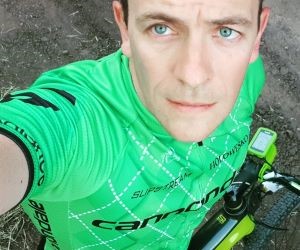Learn how to deal with punctures on long rides with prevention tips, repair techniques, and smart gear choices to keep rolling without stress.
WHAT WAS JONAS VINGEGAARD’S WINNING STRATEGY AT THE VUELTA A ESPAÑA?
Jonas Vingegaard’s performance at the Vuelta a España wasn't just about raw power—it was a masterclass in precision, planning, and execution. From brutal climbs to tactical alliances, Vingegaard leveraged everything from team dynamics to cutting-edge analytics. His strategy reflected a Tour de France winner's maturity: calculated attacks, smart recovery, and deep trust in his Jumbo-Visma squad. This article breaks down how Vingegaard carved out his path to victory in one of cycling’s toughest races.

Stage selection and timed aggression
One of the most defining elements of Jonas Vingegaard’s Vuelta a España win was his disciplined use of energy and timing. He didn't attempt to dominate every stage—instead, he targeted key mountain stages where his physiology and training could deliver maximal impact. This strategic restraint allowed him to conserve energy on flatter stages and focus his attacks on terrain that favored his lightweight climbing build.
Pinpointing when and where to strike
Vingegaard and his team highlighted critical stages well before the Vuelta began, especially those with summit finishes and high-altitude climbs. He stayed tucked safely in the peloton or behind teammates until the moment was right—often delivering devastating accelerations in the final kilometers of key climbs. By using power data and terrain modeling, he precisely calculated when his efforts would yield maximum time gaps.
Avoided unnecessary attacks in transitional stages.
Targeted summit finishes for maximum GC damage.
Used teammates to control pace until launch point.
Relied on altitude acclimation from Tour de France form.
Timed attacks based on rivals’ fatigue markers.
Stages like the brutal climb to Bejes and the monstrous Angliru were tactical goldmines for Vingegaard. His dominance wasn't just physical—it was the result of intelligent planning, where each effort was mapped to maximize gain and minimize exposure. This approach allowed him to gain minutes rather than seconds when it truly mattered.
Leveraging Jumbo-Visma’s team dynamics
Vingegaard’s Vuelta strategy was deeply intertwined with the strength of his Jumbo-Visma teammates—most notably Sepp Kuss and Primož Roglič. Rather than a solo act, the campaign was a masterfully coordinated team effort. Each rider played a defined role across flat stages, breakaway chases, and mountain assaults. Vingegaard’s ability to both lead and support within the GC trio added a unique complexity to Jumbo’s dominance.
How the team executed multi-leader strategy
While traditional teams rally around a single GC leader, Jumbo-Visma ran a three-leader system that kept rivals guessing. At times, Vingegaard played the aggressor to force competitors to respond, allowing Kuss to retain red or Roglič to recover. At others, he deferred to team tactics, creating a decoy dynamic that stretched the resources of Ineos, UAE Team Emirates, and Movistar.
Three-leader model allowed rotational offensive tactics.
Vingegaard alternated roles: attacker, defender, pacer.
Team cohesion avoided internal rivalry despite GC overlap.
Domestiques like Kelderman and Gesink controlled tempo expertly.
Intra-team respect helped optimize stage priorities.
Vingegaard’s trust in the Jumbo system allowed him to bide his time. When attacks came, the team had already softened the field. The dynamic between Kuss, Roglič, and Vingegaard showed how unity—not ego—can dictate race outcomes. Vingegaard’s brilliance wasn’t just in his legs, but in his alignment with collective strategy.
Precision recovery and marginal gains
Behind every winning ride is a world-class recovery and marginal gains strategy. For Vingegaard, who was coming off a taxing Tour de France, managing cumulative fatigue was as critical as climbing prowess. Jumbo-Visma leaned heavily on data analytics, recovery science, and environmental control to ensure their riders bounced back strong day after day in the brutal three-week grind.
Data-driven recovery as a secret weapon
Vingegaard used a suite of wearables and internal tools to monitor sleep, hydration, HRV, and muscle recovery. These metrics informed daily ride intensity, meal plans, and rest routines. The team optimized hotel environments—portable mattresses, noise machines, and altitude tents were standard. Even post-race cool-downs were choreographed to avoid lactate buildup.
Sleep and HRV tracking dictated daily effort load.
Nutrition timed to glycogen windows post-stage.
Massage and compression protocols done immediately post-race.
Data dashboards gave coaches live recovery feedback.
Pacing adjusted mid-stage based on real-time fatigue.
This obsessive attention to detail allowed Vingegaard to maintain a high level of consistency—even in the Vuelta’s toughest weeks. While others cracked under cumulative stress, he appeared sharper as the race went on. Marginal gains made a major difference, and Vingegaard’s ability to execute those protocols with discipline proved foundational to his success.
YOU MAY ALSO BE INTERESTED






